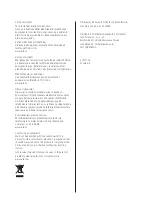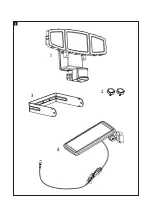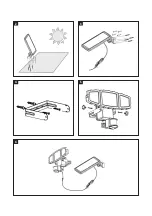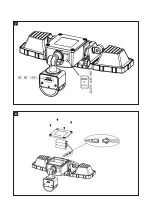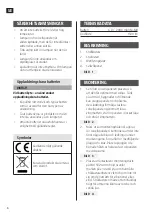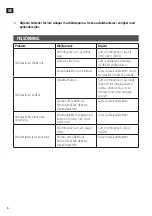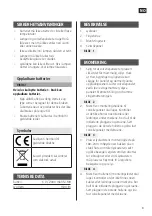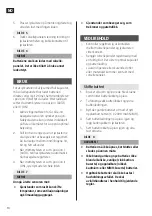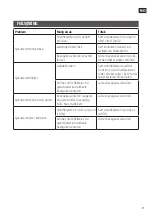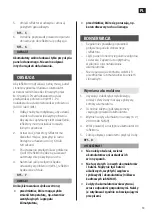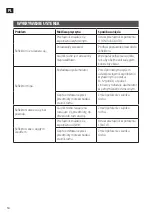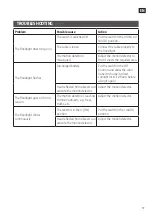
EN
16
screws.
5. Place the floodlight on the mounting
bracket and fasten with the star knob.
FIG. 5
6. Route the solar panel cable to the
floodlight and connect.
FIG. 6
NOTE:
Only use the solar panel to charge the
batteries. Do not use any other type of
charger.
USE
Before the floodlight can shine at full capacity
the solar panel must have charged the battery
in direct sunlight for 8–12 hours. Put the switch
in the 0 (OFF) position before charging. After
charging put the switch in the I (AUTO) or II
(ON) position.
1. Undo the wing nut to place the motion
detector in the required position. The side
floodlights can be individually adjusted for
optimum illumination.
2. Decide how long you want the floodlights
to shine after movement is detected by
selecting one of the settings; 30, 60 or
120 seconds.
3. When the switch is put in the I (AUTO)
position the floodlight switches on
automatically when movement is
detected.
4. When the switch is put in the II
(ON) position the floodlight shines
continuously.
FIG. 7
NOTE:
Avoid pointing the sensor at:
• Objects that can quickly change
temperature, e.g. ventilation openings
and air conditioning units.
• Things that move, such as treetops and
traffic.
MAINTENANCE
• Check at regular intervals that the
connection between the solar panel and
the floodlight is working properly.
• Clean the solar panel regularly with a
damp cloth. This ensures optimum
capacity and battery charging.
• Never allow abrasive substances or
materials to come into contact with the
solar panel.
Replacing the battery
1. Use a Phillips screwdriver to unscrew the
four screws holding the battery cover in
place.
2. Carefully remove the battery cover and
release the battery cable.
3. Replace the old battery with a new
rechargeable battery (6 V 2000 mAh
Ni-MH).
4. Replace the battery cable and put the
battery pack in the floodlight.
5. Replace the battery cover and screw tight.
FIG. 8
WARNING!
• Do not open, short-circuit or otherwise
damage batteries.
• Do not mix old and new batteries.
Do not mix alkaline, standard (carbon-
zinc) and rechargeable (nickel-cadmium
or NiMH) batteries.
• Used batteries must not be discarded in
household waste. They must be recycled
in accordance with local regulations.

